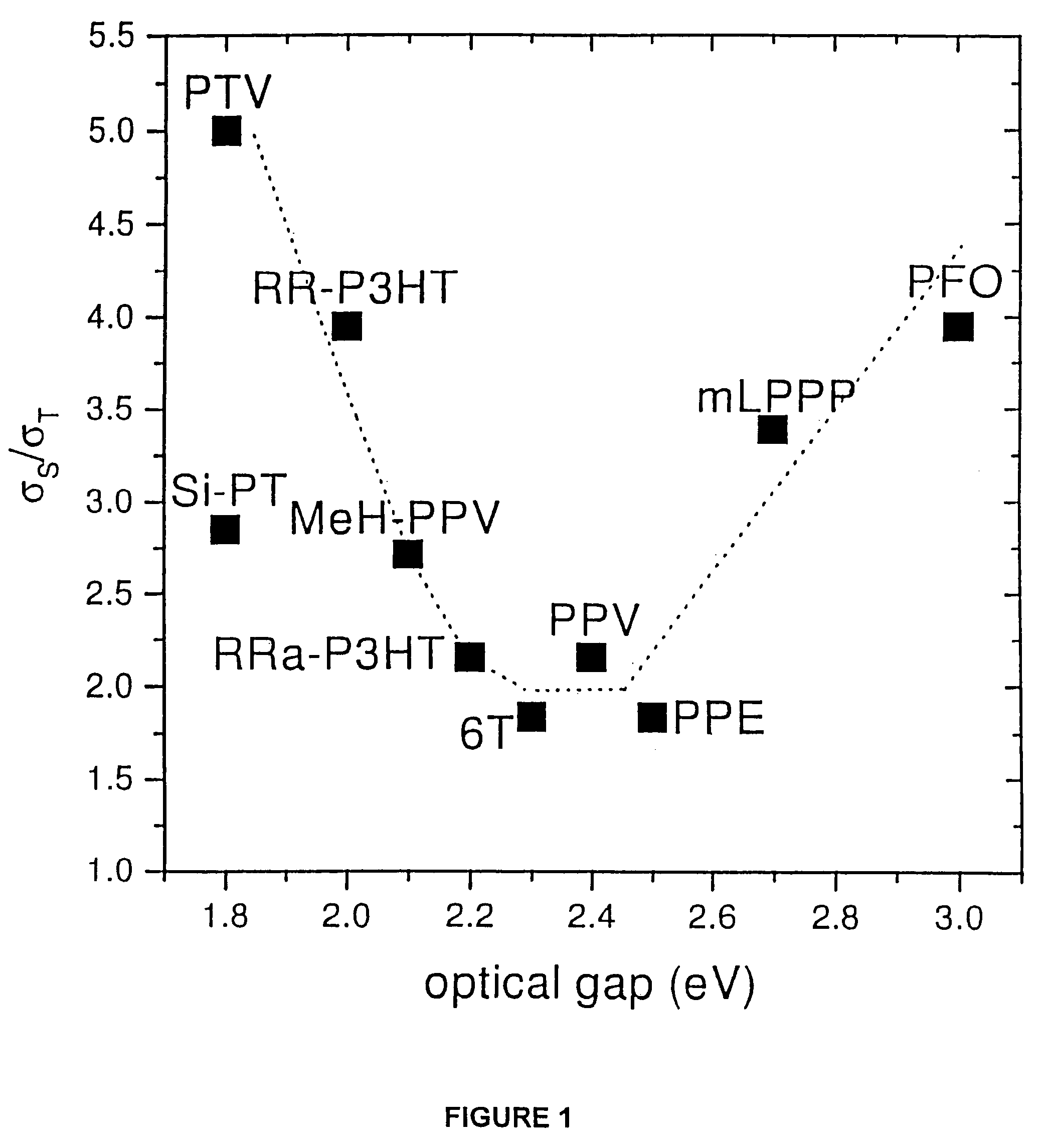Organic light-emitting devices using spin-dependent processes
a technology of organic light-emitting devices and spin-dependent processes, which is applied in the direction of discharge tube/lamp details, nanoinformatics, natural mineral layered products, etc., can solve the problems of undesirable triplet decay channels, increase the maximum luminous efficiency of organic light-emitting materials, and reduce the spin-lattice tim
- Summary
- Abstract
- Description
- Claims
- Application Information
AI Technical Summary
Benefits of technology
Problems solved by technology
Method used
Image
Examples
Embodiment Construction
[0023]Before beginning, note that in this specification, the term “LED” refers to light-emitting devices, which include light-emitting diodes. Since the electrical pumping of LEDs results in electro-luminescence, such devices are also known as electro-luminescent devices. “OLED” refers to organic light-emitting devices, including LEDs based upon organic materials, such as polymers, molecular crystals, complexes (including metal-ligand complexes), and the like.
[0024]Recent experimental and theoretical work carried out by the inventors shows that σS is greater than σT for a number of conjugated polymers and oligomers. The results indicate that the singlet-triplet cross section ratio (σS / σT) is greater than 1 for a number of polymers and oligomers, and that (σS / σT) was related to the optical gap of the polymer or oligomer through a non-monotonic function.
[0025]FIG. 1 shows results for a number of materials as a function of optical gap. These data arose from a study of π-conjugated poly...
PUM
| Property | Measurement | Unit |
|---|---|---|
| frequency | aaaaa | aaaaa |
| spin-lattice relaxation rate | aaaaa | aaaaa |
| light emissivity | aaaaa | aaaaa |
Abstract
Description
Claims
Application Information
 Login to View More
Login to View More - R&D
- Intellectual Property
- Life Sciences
- Materials
- Tech Scout
- Unparalleled Data Quality
- Higher Quality Content
- 60% Fewer Hallucinations
Browse by: Latest US Patents, China's latest patents, Technical Efficacy Thesaurus, Application Domain, Technology Topic, Popular Technical Reports.
© 2025 PatSnap. All rights reserved.Legal|Privacy policy|Modern Slavery Act Transparency Statement|Sitemap|About US| Contact US: help@patsnap.com



